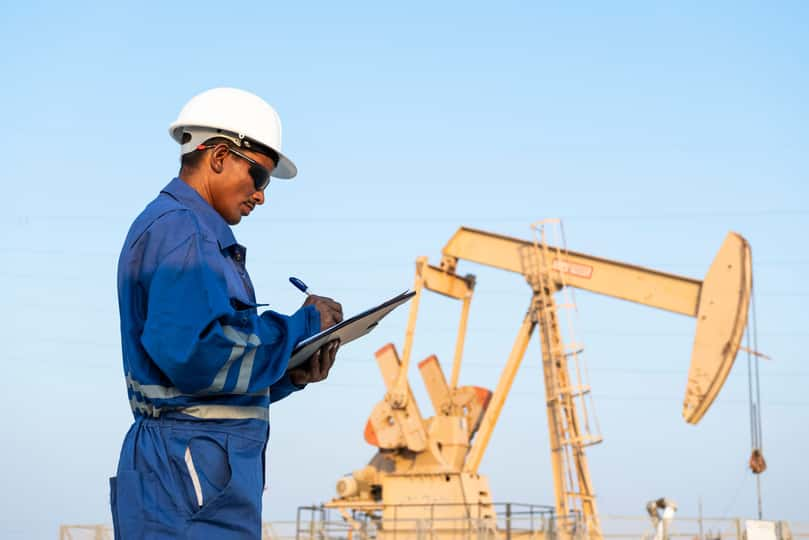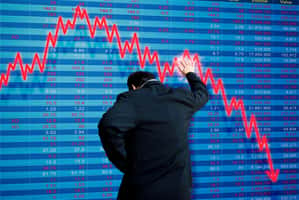Operating as one of the largest energy infrastructure companies in North America, Kinder Morgan (KMI - Get Rating), in Houston, Tex., transports natural gas, gasoline, crude oil, carbon dioxide (CO2), and more through its pipelines. The company’s terminals store and handle petroleum products, chemicals, and other products. KMI holds interest in or operates approximately 83,000 miles of pipelines and 144 terminals.
The stock has gained 46.4% in price over the past year and 35.7% year-to-date to close its last trading session at $17.85. Furthermore, KMI is trading above its 50-day and 200-day moving averages. This can be attributed to optimism surrounding the oil and gas industry as the energy prices reach record highs amid rebounding fuel demand.
Rebounding fuel demand has boosted the pipeline operator’s volumes significantly. KMI’s gasoline volumes jumped 9%, while its jet fuel volumes surged 56% for the third quarter. In addition, increasing liquefied natural gas exports mainly to Europe and Asia with the nearing winter heating season has increased its gas pipeline volumes. “We continue to benefit from growing global natural gas demand. Our assets are well-positioned to serve growing domestic markets and export locations for LNG and Mexico,” said Chief Executive Officer Steve Kean. KMI also reported better-than-expected revenue growth for the quarter.
However, OPEC has cut its global oil demand growth forecast for this year. The organization anticipates that the continued spread of COVID-19 will cloud oil demand prospects. Also, the International Energy Agency (IEA) recently warned of an increase in volatility in the energy market. Fatih Birol, head of the IEA, said there is a “looming risk of more turbulence for global energy markets.” Although KMI performed well during the third quarter of the year, its near-term prospects could be hindered by concerns related to the spread of the virus and the possibility of reduced energy demand.
Here’s what could shape KMI’s performance in the near term:
Mixed Analysts Estimates
Analysts expect KMI’s revenues to increase 10.1% in the current quarter and 29.1% in the current year. However, its revenue is expected to decline 12.8% year-over-year to $13.17 billion in the following year. The company’s EPS is expected to decline 7.4% in the current quarter and 48.3% in the next quarter. But the Street expects KMI’s EPS to rise 44.3% year-over-year to $1.27 in the current year. The company’s EPS is expected to grow 7.1% per annum over the next five years.
Also, of the five Wall Street analysts that rated the stock, two rated it Buy, two rated it Hold, while one rated it Sell.
Solid Third-Quarter Earnings Report
KMI’s revenues increased 31% year-over-year to $3.82 billion in its fiscal third quarter, ended September 30. Its operating income stood at $844 million, up 3.1% from the same period last year. Its net income attributable to the company grew 8.8% from its year-ago value to $495 million. And the company’s EPS increased 10% year-over-year to $0.22. In addition, its adjusted earnings and adjusted EPS increased 4% and 5%, respectively, year-over-year.
Mixed Valuation
In terms of forward P/E, KMI is currently trading at 23.05x, which is 79.9% higher than the 12.81x industry average. Also, its 4.74 forward EV/Sales ratio is 75.8% higher than the 2.69 industry average.
However, KMI’s trailing-12-month PEG is 80.6% lower than the 0.08 industry average, and its forward Price/Book is 27.5% lower than the 1.81 industry average.
POWR Ratings Reflect Uncertain Prospects
KMI has an overall C rating, which translates to Neutral in our proprietary POWR Ratings system. The POWR Ratings are calculated considering 118 distinct factors, with each factor weighted to an optimal degree.
The stock has a C grade for Value, which is consistent with its mixed valuation.
KMI also has a C grade for Sentiment. Mixed analyst sentiment about the stock justifies this grade.
Of the 89 stocks in the Energy – Oil & Gas industry, KMI is ranked #57.
Beyond what I have stated above, one can also view KMI’s grades for Quality, Growth, Momentum, and Stability here.
View the top-rated stocks in the Energy – Oil & Gas industry here.
Bottom-Line
KMI delivered a solid third-quarter financial report, triggering investors’ optimism. With rising oil and gas prices and the rebounding fuel demand, the bullish industry trends have favored the company’s performance so far. However, increasing cases of COVID-19 could potentially become a significant headwind for the company’s growth. Analysts expect turbulence in the energy sector soon. Considering mixed analyst sentiment about the stock and its mixed valuation, we think KMI looks less attractive than its peers. So, it would be wise to wait for a better entry point in the stock.
How Does Kinder Morgan (KMI) Stack Up Against its Peers?
While KMI has an overall POWR Rating of C, one might want to consider taking a look at its industry peers, SilverBow Resources, Inc. (SBOW - Get Rating) and Baytex Energy Corp. (BTEGF - Get Rating), which have an A (Strong Buy) rating.
Note that SBOW is one of the few stocks handpicked by our Chief Value Strategist, David Cohne, currently in the POWR Value portfolio. Learn more here.
Want More Great Investing Ideas?
KMI shares were trading at $17.84 per share on Tuesday morning, down $0.01 (-0.06%). Year-to-date, KMI has gained 37.03%, versus a 23.78% rise in the benchmark S&P 500 index during the same period.
About the Author: Subhasree Kar

Subhasree’s keen interest in financial instruments led her to pursue a career as an investment analyst. After earning a Master’s degree in Economics, she gained knowledge of equity research and portfolio management at Finlatics. More...
More Resources for the Stocks in this Article
| Ticker | POWR Rating | Industry Rank | Rank in Industry |
| KMI | Get Rating | Get Rating | Get Rating |
| SBOW | Get Rating | Get Rating | Get Rating |
| BTEGF | Get Rating | Get Rating | Get Rating |





